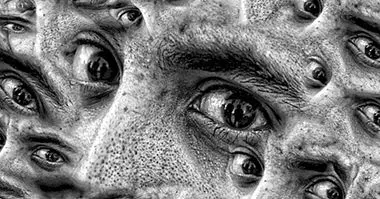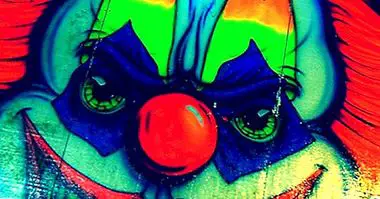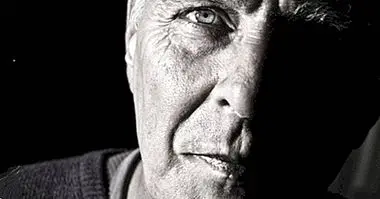Esquizotimia: definition, causes, symptoms, treatment and controversy
Throughout the history of psychology has tried to decipher the mind and thinking of people through all kinds of methods. Certain psychological research currents created a series of psychiatric classifications or typologies taking as reference the characteristics or physical attributes shared by a determined number of people.
One of these typologies is the not very well known schizotymy . Throughout this article we will talk about what is the meaning of this term, where is its origin and the weak points that it has when defining a person's temperament.
What is schizotymy?
Schizotymic or schizotymic personality is a term, now in disuse, which was used to refer to people of a withdrawn and distant nature , which do not present any type of psychotic pathology. These people usually live in solitude and with full attention placed on their inner world. They are also people with a tendency or predisposition to manifest symptoms related to autism.
At the intellectual level, the schizotymic personality is related to originality, idealism and the tendency to abstract analysis and sometimes obsessive organization.
This type of personality was described by E. Kretschmer in his classification of psychiatric typologies according to physical appearance and temperament. And it would constitute a non-pathological version of schizophrenia in which only negative symptomatology is presented.
This tendency to introversion and isolation, typical of schizotymy, differs from cyclothymia in that in this second the person experiences a series of fluctuations that lead from this state of introversion or depression to a state of extreme enthusiasm or euphoria.
Schizotymy is characterized by the depth and intensity with which the person experiences their most intimate experiences, which are followed by extensive periods of subjective reflection and internalization.
In the same way that the person lacks any type of interest for the external reality that encompasses him, he also manifests large deficits in social skills , which is a problem when starting or maintaining any type of interpersonal relationship.
Another special characteristic of schizotymic people is that they are expressing their anger or aggressiveness in a very cold and distant way. As a rule, the schizophrenic will tend to accumulate his little outbursts of anger or disappointments, downloading them only on very few and rare occasions.
This isolation from reality and the need to be centered in your inner world are conditioning factors when the person comes to suffer some kind of psychosis, since it is surely manifested in the form of schizophrenia.
Therefore, and according to the psychological characteristics described above, schizotymia would constitute a non-pathological version of schizophrenia in which the manifestation of negative symptomatology predominates.
Origin and evolution of schizotymy
As discussed in the previous point, Kretschmer was the one who coined the term schizotymy within his classification of psychiatric pathologies. This classification is based on the idea that there are four types or models of psychiatric personality which depend on the physical appearance of the person, keeping an intrinsic and direct relationship between the body structure and the personality of the subjects.
After observing, examining and measuring a large number of subjects, Kretschmer made a classification of the temperament based on the body and morphological structure of people. From this study he extracted three basic archetypes of temperament.
These were the asthenics or leptosomatics to which corresponds the schizotymic temperament, the cyclothymic temperament and the athletic viscous or ixotimic temperament. . In addition, created a fourth category called "dysplastic" which would include all those people who can not be classified in the previous three.
For a better understanding of this classification, the four categories created by Kretschmer are described below.
1. Leptosomal or schizothymic
The morphology of the leptosomal or schizothymic person is characterized by a long and thin constitution . With contracted shoulders and back, thin skeleton and long and narrow trunk. They are also distinguished by a pale skin face, generous nose and angled profile.
As for the temperament corresponds to the schizothymic.Which, as described above, stands out for being unsocial, shy, introspective and reflective, pessimistic and irascible, but at the same time he is also tenacious, dreamy, idealistic and analytical.
2. Pythonic or cyclothymic
According to the German psychiatrist, the pythonic or cyclothymic people are distinguished by a physical appearance of wide trunk and short arms and legs , as well as a normal stature and rounded figure. In addition, they are susceptible to obesity and have a soft body in which fat abounds.
A cyclothymic temperament corresponds to a person of the pycnical type. People with this temperament are differentiated by being affable, benevolent, affectionate and cheerful. But with sudden outbursts of anger, explosives and anger intermittently. However, they can also be sociable, talkative, practical and realistic.
3. Athletic or viscous
The person of athletic morphology and viscous temperament have physical features such as broad shoulders and shoulders that narrow as they approach the waist, large and rough limbs, robust bones and a rough complexion.
This type of body constitution is associated with the viscous temperament, which manifests itself through passive, emotionally stable behaviors , calm, indifferent, unimaginative and sure of his vigor.
4. Displastic
Finally, this last categorization includes people with insufficient or excessive development, with some type of physical anomaly or who can not be classified in any of the previous subtypes.
After this classification, and due to the criticism it has received over time, W. H. Sheldon, a professor at Harvard University, created another parallel classification. This classification was also elaborated based on the person's physique. However, in addition to the physical complexion Sheldon also took into account other factors such as viscerotonía or cerebrotonía.
According to Sheldon, people who manifest the schizotymic temperament proposed by Kerscher correspond to the subtype "ectomorph" created by himself. A person with ectomorphic physical characteristics is distinguished by an emaciated dermis, poor musculature and fragile bones. As well as long and thin limbs.
Criticisms of the schizotymic term
As mentioned at the beginning of the article, the term schizotymic , like the rest of the classification of temperaments has not been rid of criticism from the scientific community, so it has not enjoyed a long life, and being replaced by a meaning with much more support: dysthymia.
Dysthymia and dysthymic disorder are characterized by a depressed mood. It is considered a chronic disorder by which the person is invaded by a series of melancholic feelings but does not become a depression by itself.
- Among the reasons why the schizotymic term has not become integrated into current psychiatric classifications are:
- It is a very reductionist label. You can not determine the personality or temperament of a person only taking into account his physical constitution
- Kretschmer only describes extreme types, without taking into account the intermediate points
- The physical changes that the person can suffer during his life are not taken into account



















